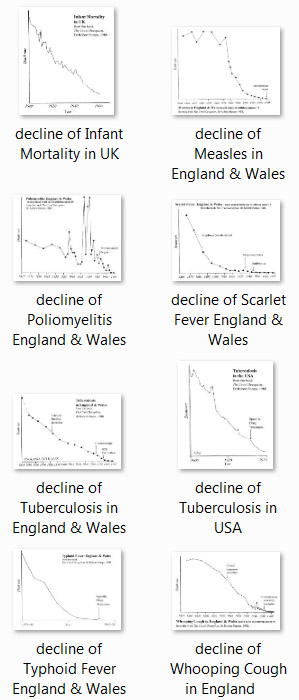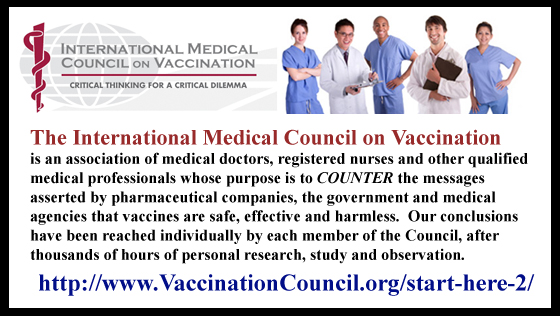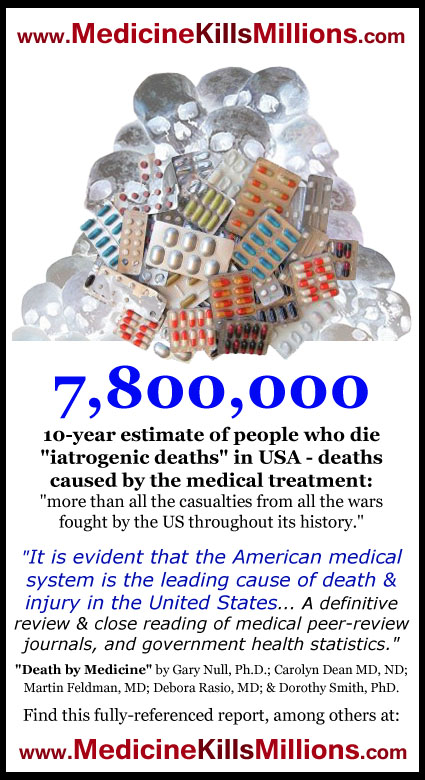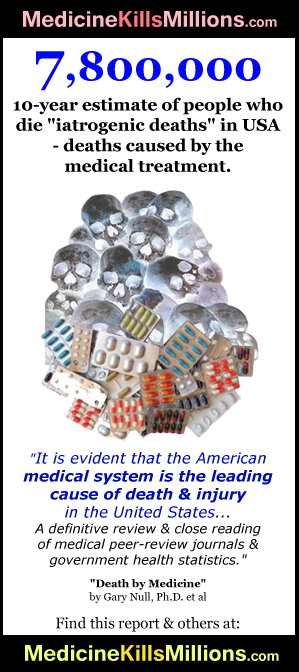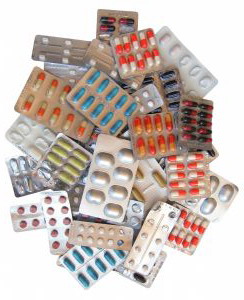![]()
Myths of Modern Medicine: The Increase in the Human Life Span.
Our longer, healthier life span is due to a range of political social reforms, as described below. Medical interventions and commercial drug products had very little impact.
For diagrams that illustrate the decline of infant mortality
and of the major infectious diseases see the article: Truth About the Decline of the Infectious Diseases |
Medical products contributed little to increasing the human life span:
For instance, "Researchers John & Sonya McKinlay... showed that medical intervention only accounted for between 1 & 3.5 per cent of the increase in the average life span in the United States since 1900." [1] (Yes you read that correctly, just one to three point five percent.)
Similarly, in the words of Dr Richard Taylor, in Australia: "almost 80 per cent of the reduction in infant mortality between the 1880s & the 1970s occurred prior to the 1930s." [2]
That is, survival rates for infants increased steadily long before the widespread use of pharmaceutical drugs or vaccines designed to combat infectious diseases. Extensive vaccination did not begin in Australia until the mid-1930s and for many diseases did not commence until the 1950s and 1960s. This pattern is duplicated across the developed world.
Social reforms brought about the increase in healthy human life span:
In the words of medical historian Hans Ruesch: "All the medical historians of our century ... agree that the decline of the epidemics which had wrought havoc in the Middle Ages was not due to the introduction of vaccination, but of hygiene, for they had diminished long before large-scale inoculations had begun..." [3]
Medical historians explain that the great advances in human health like:
- the decline of the infectious diseases;
- the reductions in infant and maternal (birth) mortality rates; and
- the resulting increase in overall human life span;
are due to reforms that improved our living conditions - via improvements to our social infrastructure. [4,5,6,7]
Consider that almost everyone used to live surrounded by rubbish and raw sewerage; ideal conditions for disease.
Humans (in developed countries) now live longer healthier lives due to these kinds of reforms during the nineteenth and twentieth centuries: [4,5,7]
- Access to clean fresh water supplies.
- Improved sanitation - flushing toilets and sewerage systems; governments collecting and removing rubbish and waste from where people live; burying the dead further away from where people live.
- Access to better nutrition (like fruit and vegetables from afar) due to improved trade, transport and refrigeration.
- Improved hygiene - people washing more often, particularly their hands.
- Improved antisepsis by doctors and hospitals - when doctors did not wash their hands or apply other meticulous antisepsis they spread infections from person to person. Antisepsis improved the survival rates for surgery.
- Improved maternal care - care for mothers
who have given birth: "Maternal mortality rates [death rates for mothers] were lowest for home deliveries undertaken by trained and supervised midwives ... In contrast ... maternal mortality rates were very high ... where most deliveries were performed by physicians... due to unnecessary interference." [8]
- Improved housing conditions - so that less people were confined together in unhealthy housing conditions.
- Improved working conditions - shorter working hours, more rest-time, laws and regulations that reduced health hazards.
- Innovations like sickness insurance legislation led to improved care for mothers and infants. [9]
~ ~ ~ ~ ~
Dr Robert Sharpe: "Mortality for virtually all the infections was declining before, and in most cases long before, specific therapies became available... The impetus to better health from the mid nineteenth century onwards can therefore be directly traced to public health measures and social legislation that improved the living standards of working people... Higher wages and welfare benefits made it possible for the poor to eat properly and public health measures radically improved conditions in the densely-populated urban areas, particularly with the provision of clean water supplies, sanitation, sewerage and new housing... Susceptibility to the infections diminished radically as nutrition, housing, hygiene and genreal living conditions improved..." [5]
"It is a widely held fallacy that mortality from infectious disease only commenced to fall with the advent of modern [pharmaceutical] agents." Ramsay & Emond, Infectious Diseases. [6]
~ ~ ~ ~ ~
In sum, the commercial pharmaceutical industry does not deserve the credit for benefits which came from social and political reforms.
Most medical interventions lack scientific evidence:
In closing, the British Medical Journal reports: "Only about 15% of medical interventions are supported by solid scientific evidence... This is partly because only 1% of the articles in medical journals are scientifically sound and partly because many treatments have never been assessed at all". [10]
![]()
Related Articles:
- A History of Medicine, Medical Progress & Advances: Summary of how human medicine: i) progressed due to scientific observations and ethical treatment of humans; and ii) was stalled and led astray for millenia due to misleading results from vivisection; excerpts from the book by Hans Ruesch titled "Slaughter of the Innocent".
- This PDF provides a similar account on the history of the decline of mortality from infectious diseases - from Dr Robert Sharpe's book "The Cruel Deception" - an 11-page PDF excerpt.
- Myths of Modern Medicine: The Decline of the Infectious Diseases happened before commercial vaccines, immunisations and drugs were develeped for them. This page contains numerous graphs and diagrams that illustrate the statistics and trends.
- Doctors warn about the dangers of Vaccination-Immunisation. They explain how vaccines may not protect and how they could cause serious illnesses. Also, a contract for your doctor to sign before vaccination, in order that they reimburse you for any damages.
- The Decline of Smallpox in Great Britain - Vaccination in Doubt. It includes a critique of Edward Jenner's book and theories.
For information on studies that show how modern medicine is a leading cause of human death and injury, see:
- Death By Medicine - studies in science journals reveal that medical treatment may be the leading cause of death in the USA
- Why Do Pharmaceutical Drugs Injure & Kill So Many People? Are we the real guinea-pigs?
![]()
References:
[1] J.B. McKinlay & S. McKinlay, Health & Society, Millibank Memorial Fund, 1977, pp.405-28 (as cited in The Pharmaceutical Drug Racket Part 1, CAFMR, 1993 p.7, a two part 40-page booklet that exposes the drug industry; see http://www.pnc.com.au/~cafmr/online/research/index.html for excerpts).
[2] Dr. Richard Taylor, Medicine out of Control, 1979 p.9, Sun books.
[3] Hans Ruesch, Slaughter of the Innocent, CIVITAS Publications, Hartsdale NY, 1991, page 194.
[4] T. McKeown, The Role of Medicine, Blackwell Scientific Publications, 1979; T. McKeown and C.R. Lowe, An Introduction to Social Medicine, Blackwell Scientific Publications, 1976 (both cited in The Pharmaceutical Drug Racket Part 1, Jon Lesso, CAFMR, 1993 p.7, a two part 40-page booklet that exposes the drug industry; see http://www.pnc.com.au/~cafmr/online/research/index.html for excerpts).
[5] Robert Sharpe, The Cruel Deception, Thorsons Publishing Group, Wellingborough, U.K. 1988, chapter 1, p.24
[6] A.M. Ramsay and R.T. Emond, Infectious Diseases, Heinemann, 1967.
[7] Hans Ruesch, Slaughter of the Innocent, CIVITAS Publications, Hartsdale NY, 1991, pp. 147-287.
[8] Irvine Loudon, "Maternal mortality in the past and its relevance to developing countries today", The American Journal of Clinical Nutrition, July 2000 vol. 72 no. 1 241S-246S.
[9] John Bowblis, "The Decline in Infant Death Rates, 1878–1913: The Role of Early Sickness Insurance Programs", The Journal of Economic History (2010),70:pp 221-232
[10] Richard Smith, editor, "Where is the wisdom?... The poverty of medical evidence", British Medical Journal, October 1991, Vol 303, 198-99, http://www.bmj.com/highwire/filestream/334291/field_highwire_article_pdf/0.pdf
For other articles - home page
Recommended Organisations:
![]() Physicians Committee
for Responsible Medicine: Group of doctors, physicians and
health practitioners promoting good health through real science. http://www.pcrm.org
Physicians Committee
for Responsible Medicine: Group of doctors, physicians and
health practitioners promoting good health through real science. http://www.pcrm.org
![]() Campaign
Against Fraudulent Medical Research (CAFMR): Archive of articles. Information that the pharmaceutical-chemical industry do not want us to know: medical history, medical fraud, psychiatric abuses,
vaccination damage coverups, behind sudden infant death syndrome (SIDS) etc. http://www.pnc.com.au/~cafmr
Campaign
Against Fraudulent Medical Research (CAFMR): Archive of articles. Information that the pharmaceutical-chemical industry do not want us to know: medical history, medical fraud, psychiatric abuses,
vaccination damage coverups, behind sudden infant death syndrome (SIDS) etc. http://www.pnc.com.au/~cafmr
Info on Vaccine damages, myths & alternatives:
- Australian Vaccination Network - http://www.avn.org.au
- What Doctors Don't Tell You - http://www.wddty.co.uk/
Return to
home page:
MedicineKillsMillions
to top
![]()
to top
